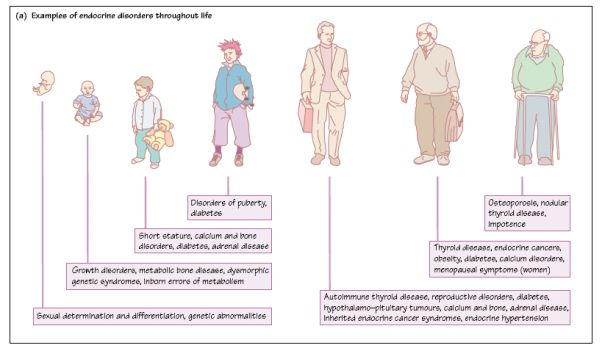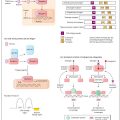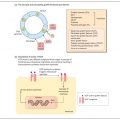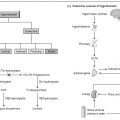
Endocrinology is the study of endocrine hormones and of the organs involved in endocrine hormone release. Classically, hormones have been described as chemical messengers, released and having their actions at distant sites. It is now clear, however, that there is a close relationship between hormones and other factors such as neurotransmitters and growth factors acting in a paracrine or autocrine fashion. Hormones are essential for the maintenance of normal physiological function and hormonal disorders occur at all stages of human life. Clinical endocrinologists thus look after patients of all ages and with a very wide range of disorders (Fig. 1a).
The principal endocrine glands
The brain is the controller of the nervous system, but it is also one of the most important endocrine glands. Specialized nerve cells, notably in the hypothalamus, synthesize hormones which are transported along the axon to the nerve terminal. Here they are released into the portal blood system, which carries them to the pituitary gland. In some cases, the axon of the neuroendocrine cell projects down to the pituitary cell itself. The principal hypothalamic neurohormones are:
1. corticotrophin-releasing hormone (CRH), controls the release of ACTH;
2. dopamine inhibits prolactin release;
3. growth-hormone-releasing hormone (GHRH) causes growth hormone release;
4. somatostatin inhibits growth hormone release;
5. gonadotrophin-releasing hormone (GnRH) causes luteinizing hormone (LH) and follicle- stimulating hormone (FSH) release;
6. thyrotrophin-releasing hormone (TRH) causes thyroid- stimulating hormone (TSH) release;
7. oxytocin causes milk ejection and contraction of the uterus in labour – it is synthesized in the hypothalamus and is stored in and released from the posterior pituitary gland;
8. vasopressin (antidiuretic hormone, ADH) promotes water reabsorption from the kidney tubules – it is synthesized in the hypothalamus, and stored in and released from the posterior pituitary gland.
The pituitary gland is composed of two lobes, anterior and posterior, which arise from different embryological origins – the anterior originates from the embryonic oral cavity and the posterior from the base of the brain (i.e. a neural origin). The two lobes become closely apposed to each other to form the pituitary gland. Humans have a non-functional intermediate lobe, which is much larger in some other animals. The principal hormones of the pituitary are:
1 anterior:
(a) corticotrophin (adrenocorticotrophic hormone; ACTH) releases glucocorticoids and other steroids from the adrenal cortex;
(b) follicle-stimulating hormone
Stay updated, free articles. Join our Telegram channel

Full access? Get Clinical Tree








